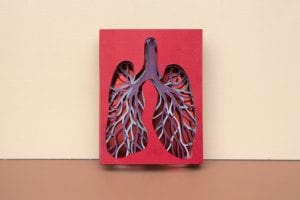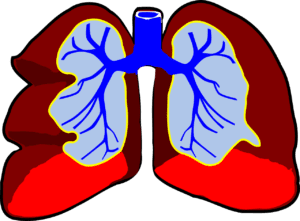Idiopathic Pulmonary Fibrosis (IPF)
What is idiopathic pulmonary fibrosis (IPF)?
Let’s break it down. “Idiopathic” means unknown cause, “pulmonary” means related to the lungs, and “fibrosis” means a hardening of (scar) tissue. Thus, idiopathic pulmonary fibrosis is the hardening of lung tissue from an unknown cause. This prevents adequate oxygen from entering the bloodstream. The most common symptoms of IPF—shortness of breath and a dry, hacking cough that doesn’t go away—can develop slowly over time and make it harder to get an early diagnosis.
Throughout the world, IPF is estimated to affect 13-20 of every 100,000 people. In the US, it’s estimated that about 100,000 people have IPF, with about 30,000-40,000 new diagnoses made every year.
What causes IPF?
Because this condition is idiopathic, no one really knows what causes IPF, but there are a few theories out there. The most popular theory is that a genetic mutation makes someone more susceptible to getting the disease, and then he/she is exposed to triggers in the environment that set the IPF off. Some of those potential triggers are viral infections, smoking cigarettes, and dust from metal or wood. There is also a belief that gastroesophageal reflux disease (GERD) might be related to IPF.
What are some of the symptoms of IPF?
IPF mainly affects the lungs. However, because the condition causes less oxygen to be absorbed by the body, it can have many wide-reaching affects.
- Lungs: IPF leads to the two most prevalent symptoms—shortness of breath and a dry, hacking cough. It can also lead to lung cancer, pneumonia, and blood clots in the lungs
- Stomach: Gastroesophageal reflux (GERD) often occurs with IPF, decreased appetite leading to weight loss
- Hand and feet: Because of the lack of oxygen reaching the extremities, the ends of the fingers and toes of a person with IPF often become rounded and wider than normal. This effect is called clubbing
Unfortunately, an IPF diagnosis comes with an IPF life expectancy of about 3-5 years. However, everyone’s IPF progresses differently. Some people rapidly decline over a few months; others stay at a similar level for many years. It all depends. Advances in IPF treatments over the past few years have aimed to help slow down the progression of IPF.
How do people inherit IPF?
The majority of people don’t inherit IPF. However, there is a smaller and rarer subset of IPF called familial pulmonary fibrosis that occurs when two or more people in the same family have IPF.
Where can I find more information about idiopathic pulmonary fibrosis (IPF)?
Idiopathic Pulmonary Fibrosis (IPF) Articles

Study of the Week: Omega-3 Fatty Acids Could Slow Pulmonary Fibrosis

Living with Pulmonary Fibrosis: Adam’s Rare Patient Story (and World Record Attempt!)


Living with Pulmonary Fibrosis: Adam’s Rare Patient Story (and World Record Attempt!)

Phase 2b Clinical Study Begins to Evaluate Bexotegrast for IPF

Study Found Ziritaxestat Ineffective in Improving IPF Lung Function









